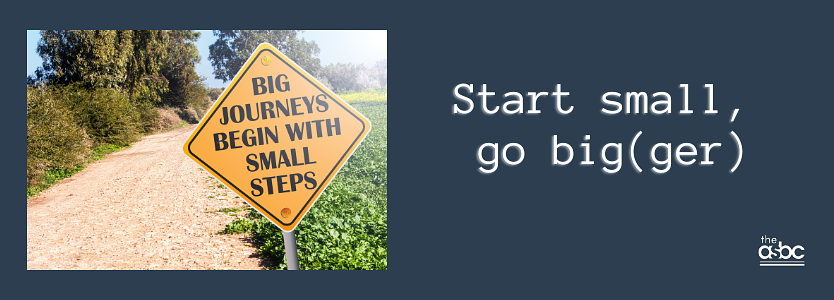Start small, go big(ger)

Be careful. Too many self-proclaimed experts don’t know what they are talking about when it comes to Micropurchases in federal contracting. I’m specifically talking about the ones who claim to have real and credible knowledge about winning real opportunities, and real dollars. Many of the GovCon YouTube and LinkedIn experts don’t know the way to federal customers and related Micropurchase opportunities, despite their slick looking courses and enticing infomercials. If you’re interested in learning about these buys as a way of growing your federal sector business, there are only three individuals I recommend. Sirena, William, and me. The knowledge and experience William and Sirena have is highly relevant and tangible, and I have known of and successfully won thousands of Micropurchase opportunities since payments were made via the IMPAC card. That’s the program that was succeeded by the GSA SmartPay Purchase Card in 1998. Yeah, I know I’m old, but that’s what makes this fun.
The thing about Micropurchases is that they are simultaneously underrated and overrated. What do I mean? On the one hand, many federal contractors turn up their noses at the mere thought of deals this small. What’s most overlooked is the fact you are more likely to interact with a Customer than a Buyer in these situations.
I’ll use that lead-in as a way to explain why Micropurchases are underrated.
GSA reports one million Purchase Card accounts as of last fiscal year. That represents one-quarter of all federal employees and military members. This means, governmentwide, there are one million purchase cardholders who can pay for goods and services up to and above the Micropurchase Threshold (MPT) of $10,000. Now consider less than 10 percent of all federal employees and military service members are Contracting professionals. This means everyone not part of that percentage is not directly part of the procurement process for purchases above the MPT. You are more likely to receive a Micropurchase order from someone who is not a Contracting Officer, versus someone who is. Let’s say this is true. This means you are probably dealing with someone involved in acquisition activities prior to the Contracting Office’s involvement. This is how it happened for me in the mid-1990’s working with my friend Ernie Taggart at NUWC Keyport, WA. I processed a bunch of small orders for him at the beginning of our relationship, and six months later earned an opportunity to provide equipment used in standing up some of the first FA-18 Electronic Classrooms at Turner Field, Cecil Field, and Whiting Field. This was my first million dollar deal.
All of the reasons Micropurchase buys are underrated, are also why they’re overrated.
Unlike Contracting Officers, the Micropurchase buyers who are not Contracting are not easy to find. They don’t show up in solicitations, because they aren’t used for Micropurchase buys. And while before 9/11 you could download lists of purchase cardholders from federal agency websites, that is all but gone for a majority of agencies. So, if the people who do these buys are largely invisible, just like the opportunities, how do you build a business around the $12 billion spent this way each fiscal year? There are multiple opportunities at different agencies like Defense Logistics Agency on their DIBBS system, the Government Publishing Office through their Simplified Purchase Agreements (SPA), and the National Institutes of Health (NIH) and their Blanket Purchase Agreements (BPA). There are also some agencies with published lists of cardholders. The trouble with these is the information about what they buy, is not included. This can lead to a lot of random inefficiency. What’s the answer?
Start with developing an informed approach to who has purchase cards, what they buy, and how to connect with them. I’ve seen several instances of GSA SmartPay Agency and Organization Program Coordinators (A/OPCs) facilitating opportunities for vendors to become visible to purchase cardholders, mostly indirectly. If you augment this by clearly understanding which initiatives, programs, and requirements align to what you offer, and cardholder organizations, you can raise the level of efficiency, and the results.
In the end, the fundamentals are the same, no matter the size of the deal. Being committed to having the information you need to make good decisions, will serve you well starting off small and when you decide to go big.
Peace, Health, and Thriving,
Go-To-Guy Timberlake
For a PDF of this blog, click here.